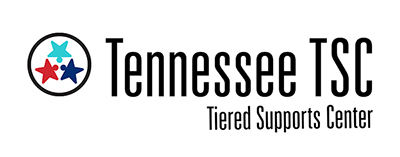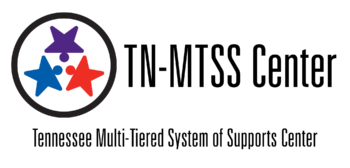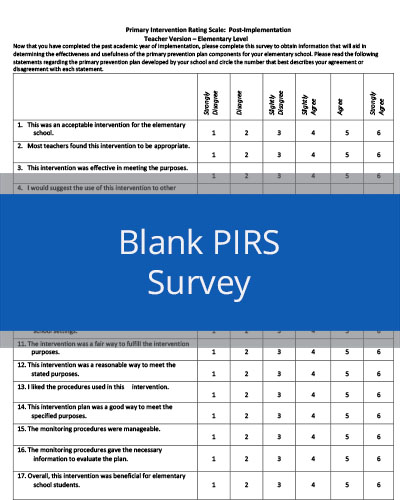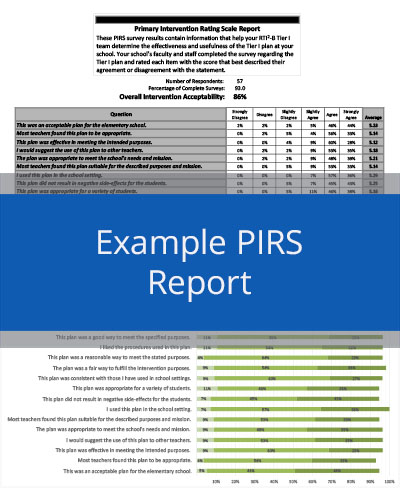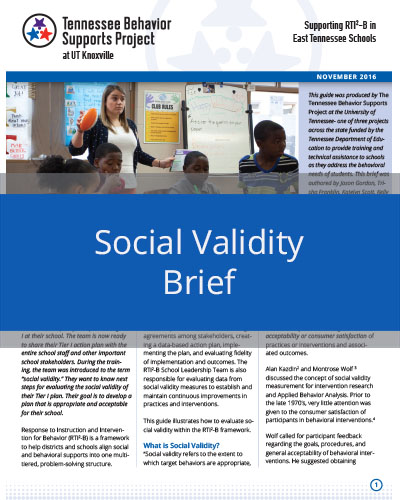TBSP asks school administrators to send the survey link to all faculty and staff at their school to give feedback regarding their RTI2-B Tier I plan. It is important for as many staff members as possible to complete this survey to get a comprehensive picture of everyone’s perception of the Tier I plan. The survey is comprised of 17 items using a 6-point Likert-type scale ranging from (1) strongly disagree to (6) strongly agree and four open-ended questions.
During the Spring, each participating school’s RTI2-B Tier I School Leadership Team will receive a PIRS report summarizing the information that TBSP received from their school’s survey. This information is useful to reflect on adult perception and social importance of the Tier I plan.
The first page of the report includes three items: (1) a table indicating the number of respondents and acceptability score, (2) a table with the percentage of responses at each rating, and (3) a graph that shows the percentage of respondents at each agreement rating.

The goal for the PIRS is at least 80% Overall Intervention Acceptability and 50% of school staff responding. If either of these numbers are lower than the goal, the team should discuss how to increase responses during the next year.
The next section is a table that gives an overall picture of how your staff perceives your RTI2-B Tier I plan. The table is ordered from the highest level of agreement on a statement to the lowest level. When reviewing the report, the team should identify one or two statements that indicate the highest level of agreement and lowest level of agreement and discuss what changes to the Tier I plan can be made.

The next section provides all responses to the four open-ended questions regarding the plan. The team should review comments for each question and look for themes. The team should not allow individual comments to dominate the conversation. Instead, the team should look for overall themes and discuss how to continue encouraging elements of the plan that are perceived strongly and how to make changes to elements of the plan that staff view negatively.

Once the team has reviewed the PIRS report, this information should be used in tandem with data from the Annual Report, including fidelity data and student outcome data, to make changes to the RTI2-B framework. The team should also communicate how staff input was used to enhance the Tier I plan. This strengthens buy-in and encourages staff to continue providing feedback.
